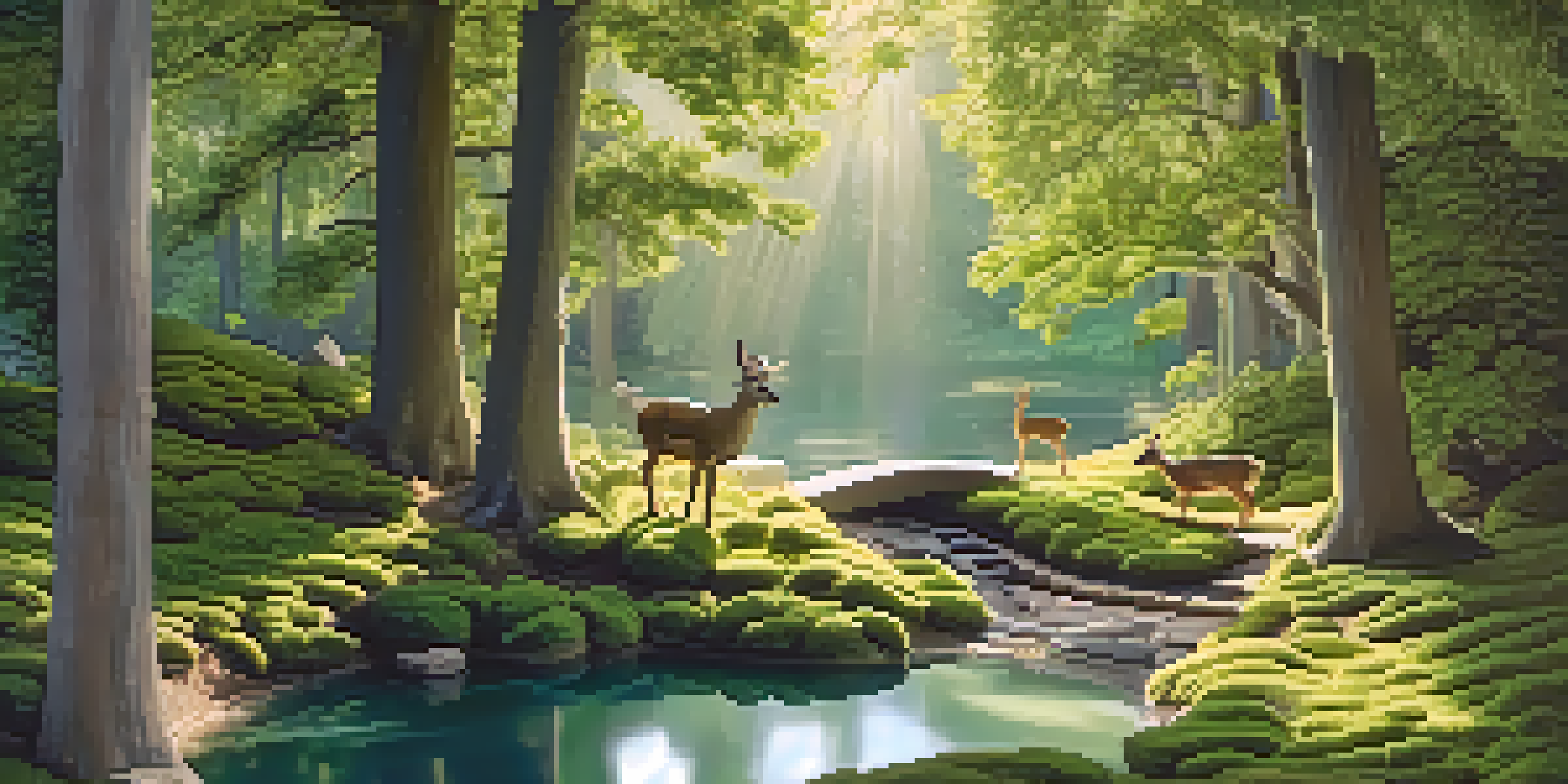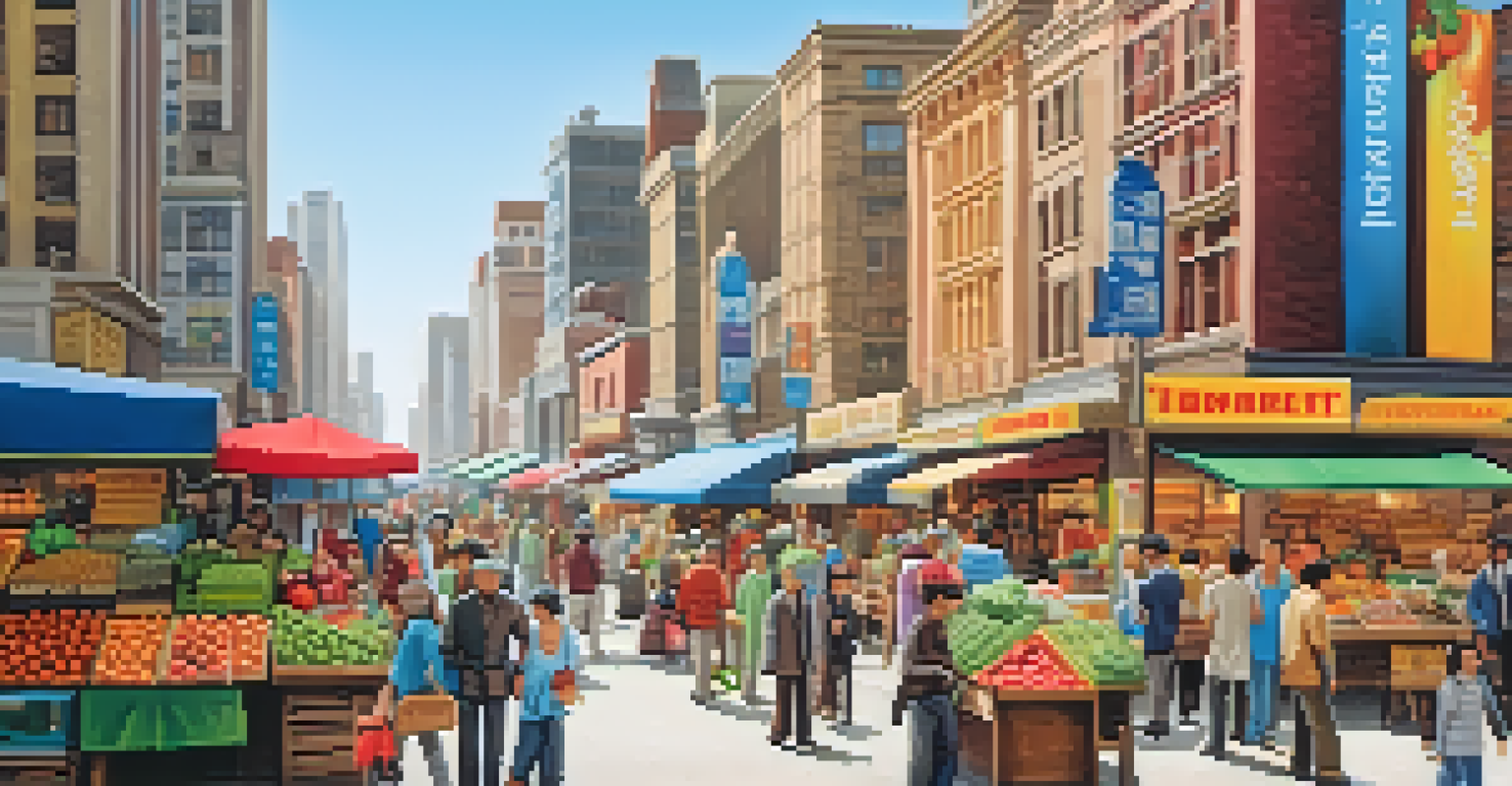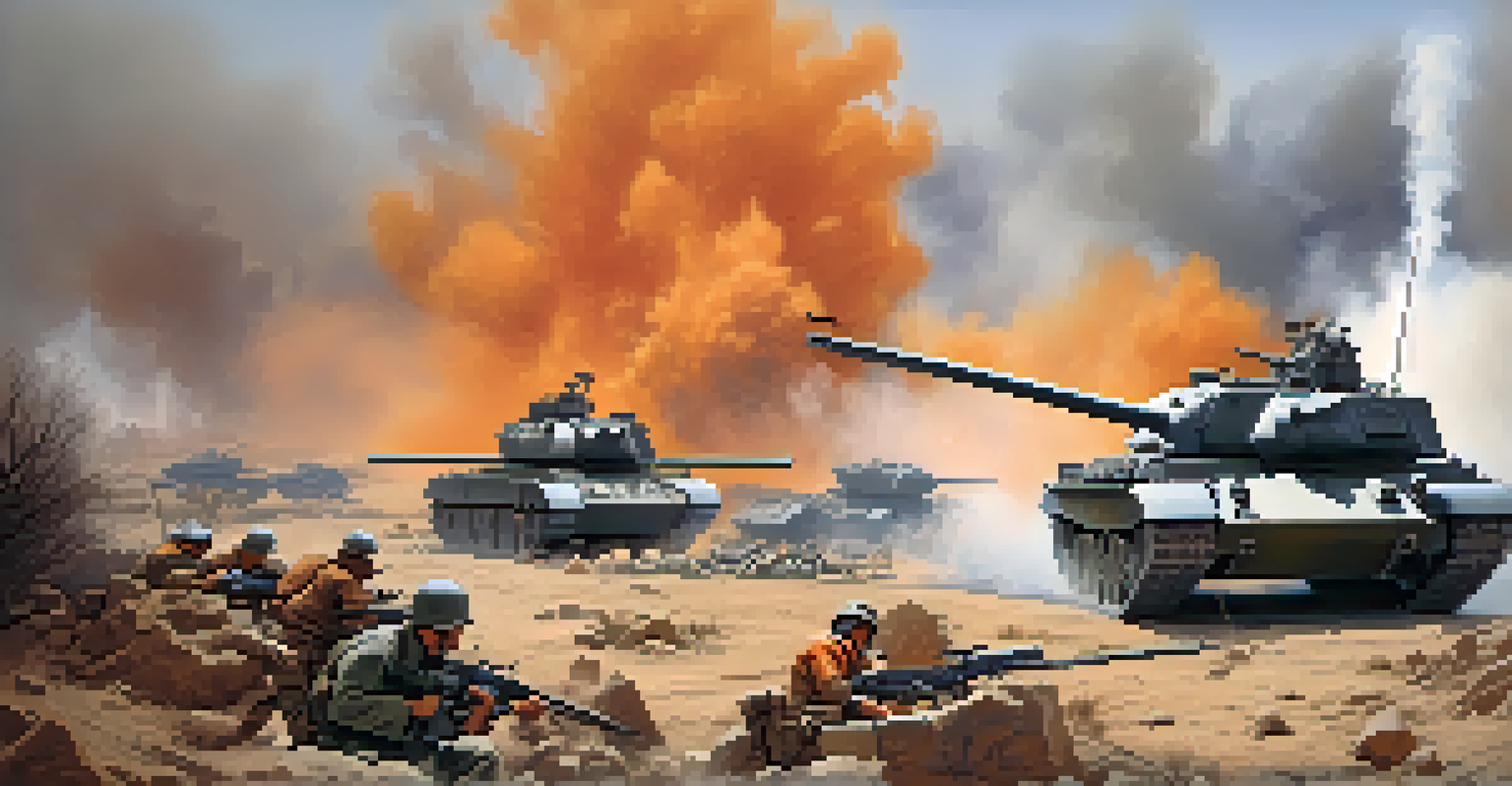Creating Dioramas: Bringing Scale Models to Life

Understanding the Basics of Dioramas
Dioramas are three-dimensional models that depict scenes in miniature form. They can range from simple tabletop displays to intricate works of art. The beauty of dioramas lies in their ability to tell a story or capture a moment in time, making the viewer feel immersed in the scene.
Every artist dips his brush in his own soul, and paints his own nature into his pictures.
Creating a successful diorama starts with a clear concept. Think about what story you want to tell or the scene you want to recreate. For instance, a diorama of a bustling city street can evoke feelings of energy and activity, while a serene forest scene can offer tranquility.
Once you have your concept, it’s time to gather materials. Commonly used items include foam board, miniature figures, and natural elements like sand or foliage. This mix of materials will help bring your vision to life.
Choosing the Right Scale for Your Diorama
Scale is a crucial aspect of diorama creation, as it dictates how everything fits together. Common scales include 1:12 for dollhouses and 1:35 for military models. Understanding scale will help you choose the right figures and accessories that complement your scene.

When selecting a scale, consider what you want to highlight in your diorama. A larger scale allows for more detail, while a smaller scale can fit more elements in a compact space. For example, a 1:12 scale diorama might allow for intricate details in a room setting, while a 1:144 scale can depict an entire city block.
Crafting Engaging Diorama Scenes
Dioramas tell stories through miniature scenes, requiring a clear concept and thoughtful material selection.
Remember that consistency is key. Mixing different scales can lead to a disjointed or unrealistic look. So, once you've chosen a scale, stick with it throughout your project to maintain harmony.
Gathering Materials for Your Diorama
The materials you choose can significantly affect the outcome of your diorama. Start with a sturdy base, which could be a piece of plywood or a thick cardboard sheet. This base will support all the elements of your diorama and provide a canvas for your creativity.
Creativity takes courage.
Next, think about the scenery. You can use natural materials like twigs and stones, or man-made elements like plastic trees and model buildings. Many hobby stores offer a wide range of products specifically designed for dioramas, making it easy to find exactly what you need.
Don’t forget about tools and adhesives. A hot glue gun is a popular choice for quick assembly, while paints and brushes can help you add detail and bring your scene to life. Having the right tools on hand will make your building process smoother and more enjoyable.
Building the Foundation of Your Diorama
With your materials ready, it’s time to start building the foundation. This step involves creating the base layer, which may include ground cover, pathways, and other foundational elements. Think of it as laying the groundwork for your miniature world.
Consider using modeling clay or textured paint to create a realistic terrain. For a beach scene, sand can be applied to mimic the shore, while grass flocking can be used for a meadow. Layering different materials will provide depth and interest to your foundation.
Importance of Scale in Dioramas
Choosing the right scale ensures that all elements fit cohesively, enhancing the scene’s realism and detail.
As you build, take a step back occasionally to assess your work. This perspective can help you see if the proportions and layout feel right or if adjustments are needed. Remember, the foundation sets the stage for everything that follows.
Adding Details: Figures and Accessories
Details can truly elevate your diorama from a simple model to an engaging scene. Adding figures, vehicles, and accessories will give life to your setting. Think about what characters or objects would naturally fit into your scene and enhance the story you want to tell.
For instance, if your diorama depicts a busy marketplace, adding people, stalls, and even signs can create a vibrant atmosphere. Similarly, a battlefield scene could be enriched with military figures, tanks, and debris to convey action and intensity.
When placing figures or objects, consider their scale and perspective. Positioning them thoughtfully will create a more believable scene, as if you’ve captured a moment in time. Don’t be afraid to experiment with different arrangements until it feels just right.
Painting and Finishing Touches
Painting is where your diorama can really shine. A well-executed paint job can add drama and realism to your scene. Start with a base coat for your ground and larger structures, then layer additional colors to create shadows and highlights.
For details, consider using brushes of various sizes to apply paint to figures and accessories. Dry brushing techniques can add texture and depth, especially to landscapes and buildings. Take your time with this step, as it can significantly enhance the overall impact of your diorama.
Adding Details for Realism
Incorporating figures and accessories breathes life into dioramas, making them more engaging and believable.
Finally, don’t overlook the finishing touches. Adding small details like weathering on vehicles or highlights on foliage can make a world of difference. These little elements can draw the viewer’s eye and make your diorama feel truly alive.
Displaying Your Finished Diorama
Once your diorama is complete, you’ll want to showcase your hard work. Choosing the right display method can enhance the viewing experience and protect your creation. Consider using a glass case or a well-lit shelf that allows for easy access and visibility.
Think about the backdrop for your diorama as well. A simple, neutral background can help your diorama stand out, while a themed backdrop can add context and depth. This consideration elevates the overall presentation and invites viewers into your miniature world.

Finally, share your work with others! Whether through social media, exhibitions, or local hobby groups, showcasing your diorama can lead to valuable feedback and inspire others. Engaging with a community of diorama enthusiasts can also open doors to new techniques and ideas for your next project.